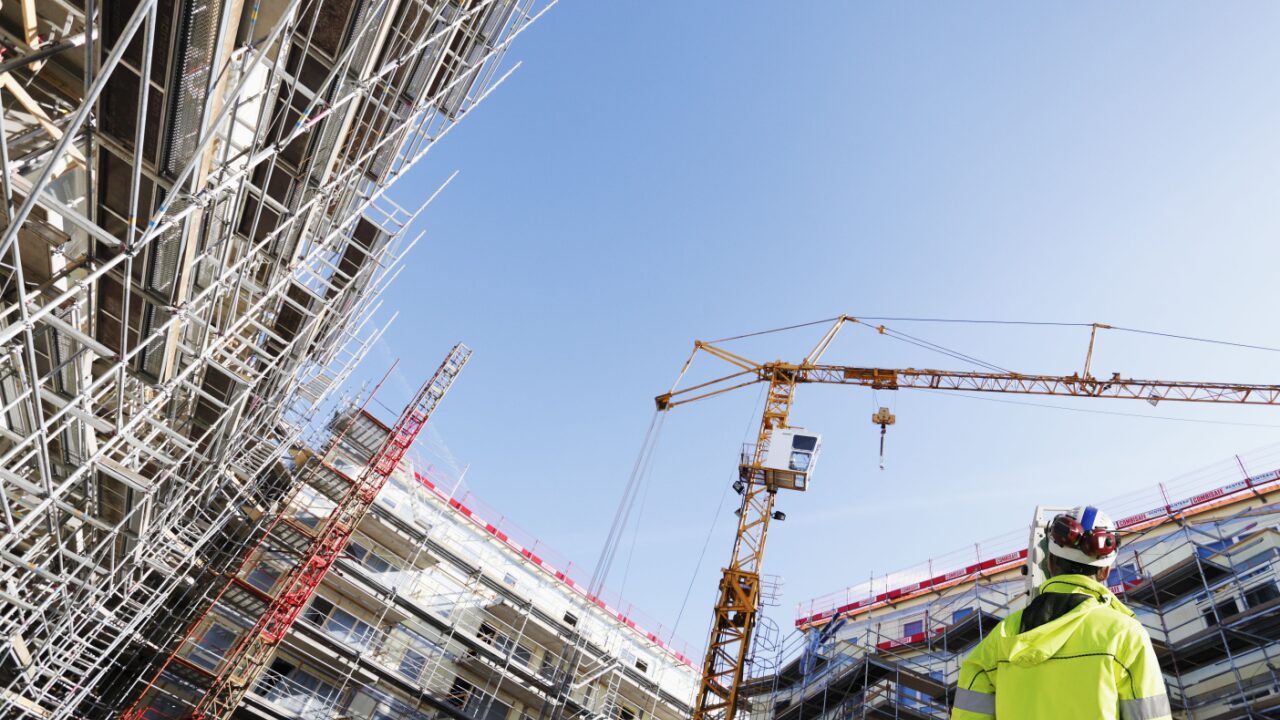Construction is complex. Just acquiring the land and getting a project approved and designed can take years. The actual construction of even a small project will involve a number of subcontractors, suppliers and consultants. Insuring a project under construction is also challenging. A comprehensive insurance program will involve the dovetailing of General Liability, Workers’ Compensation and Pollution Liability policies not to mention the most critical component, Builder’s Risk Insurance.
Builder’s Risk, or “Course Of Construction” as it is often called, is a first-party property coverage designed to insure the real property under construction. The coverage is purchased by one party, but ideally the policy will extend protection to anyone involved with the project who may have an insurable interest in the real property (stakeholders). The major stakeholders are the owner, general contractor, subcontractors and lenders.
Standardized builder’s risk policies are the exception; most insurance companies have chosen to create their own manuscripted forms and coverage can vary greatly. Because no two construction projects are the same, it is important to first analyze exposures (what could go wrong) and then tailor the builder’s risk coverage to match those exposures.
The Construction Contract-The first step necessary to understanding the risks on a given project is a review of the construction contracts, particularly the insurance requirements and indemnity sections. The insurance section, among other things, will specify who is responsible for buying the builder’s risk insurance, who is responsible for funding any deductibles and exactly what coverage is to be included. The indemnity section of the construction contract establishes which of the parties will be responsible for various losses that could conceivably occur during the course of construction, and under what circumstances the parties to the contract have waived their recovery rights against one another. It is also helpful to review the project’s financing documents (lender’s requirements) to determine what coverage the lender requires.
Covered Parties-Normally, either the owner or the general contractor is responsible for buying the builder’s risk policy. We always recommend that the owner buy the coverage. It’s their building and if there is a significant loss they will have the most at risk. Regardless of who is responsible for arranging the coverage, all stakeholders to the project, including the project owner, the general contractor, all the subcontractors and the lenders should either be included as Insureds or Loss Payees.
Covered Perils-Most builder’s risk policies are written on an “all risk” or special peril basis. In other words, everything is covered unless it is specifically excluded. Ideally the base form should be equivalent to the Insurance Services Office (ISO) CP 1030 Special Peril form. In addition to the coverage provided in the base form there are a number of other perils you will want to consider. These are outlined on our Builder’s Risk Checklist but include such things as Earthquake, Flood, other Water Damage, Collapse, Subsidence and Pollution to name a few. A thorough analysis of covered perils is critical to a well written Builder’s Risk Policy.
Covered Property-Hard Costs-The definition of “covered property” is also important. In addition to the building or structure being constructed, the description of covered property normally includes all fixtures, materials, supplies, machinery and equipment. There also may be existing structures on the site which need to be included. The definition of “building” should also be expanded to cover things like scaffolding, landscape, hardscape office trailers and fences. Our checklist includes additional hard cost items which should be considered. There is a relatively short list of property that is not covered under a builder’s risk form. This includes things such as Automobiles, Contractors’ Tools, Equipment and Machinery and Money.
Covered Property-Soft Costs-You also need to consider your “income statement” exposures, commonly referred to as “soft costs.” Soft costs are those indirect expenses necessary to rebuild the damaged structure as well as extraordinary expenses which will be incurred due to the loss. This includes things like costs to redesign and permit the structure, additional loan interest, loss of potential tax credits and loss of rental income. A complete list of potential soft costs is included in our Builder’s Risk Checklist.
Policy Terms and Conditions-In addition to the items mentioned above there are a number of terms and conditions that need to be negotiated and understood. Is the policy term adequate to account for the inevitable schedule creep and if not what are your options if the term must be extended? Are there mutual waivers of subrogation in the applicable contracts and does the policy allow for this? Are there Protective Safeguards which are required? Are there any subjectivities? A more comprehensive listing of Terms and Conditions which should be evaluated are included in our Checklist.
Summary- As mentioned above every Builder’s Risk policy is different. Every construction project is different as well. The only way to make certain the correct coverage is in place is to take the time required to understand the specific risks of the project and the Builder’s Risk coverage being proposed. Our Builder’s Risk Checklist is a critical component in this analysis.


